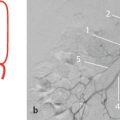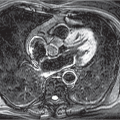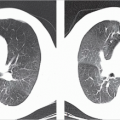
Writing a radiology research paper can be daunting, especially for students new to academic writing or the field of radiology itself. This guide simplifies the process, providing a step-by-step approach to crafting a well-structured and compelling research paper. Whether you are working on a class assignment or preparing a paper for publication, these tips will help you produce a piece of work that meets the field’s high standards.
Understanding the Basics of Radiology Research
Before diving into the writing process, it’s essential to have a solid understanding of radiology research. Radiology is a medical discipline that uses imaging techniques, such as X-rays, CT scans, and MRIs, to diagnose and treat diseases. Research in this field often involves exploring new imaging techniques, evaluating the effectiveness of existing ones, or studying the applications of radiology in different medical conditions.
When writing a radiology research paper, you aim to contribute new knowledge. This could be in the form of original research, a case study, or a literature review. Understanding the type of paper you’re writing and the specific requirements of your assignment or target journal is crucial for success.
Choosing a Topic
Selecting the right topic is the first and arguably most important step in the research process. Your topic should be relevant, interesting, and manageable within the scope of your assignment. For radiology students, choosing a topic that aligns with current trends and challenges in the field is essential.
Consider consulting with your professors or colleagues if you struggle to develop a topic. They can provide insights into pressing issues in radiology or suggest underexplored areas. Another option is to hire a professional paper writer to assist with topic selection and preliminary research. To hire paper writer can help narrow down your options and ensure that your topic is both feasible and impactful.
Conducting Thorough Research
Once you have your topic, the next step is to gather information. Start by conducting a comprehensive literature review. This involves searching for existing research on your topic and critically analyzing the findings. Use reliable academic databases like PubMed, Google Scholar, and the National Institutes of Health (NIH) resources to find peer-reviewed articles and studies.
When conducting your research, taking detailed notes and keeping track of your sources is essential. This will make it easier to reference them in your paper and ensure that you avoid plagiarism. Remember, in academic writing, the credibility of your research depends heavily on the quality of your sources.
If you’re pressed for time or find the research process overwhelming, consider hiring a paper writer. Professional paper writers for hire can assist with the research process, helping you gather and organize relevant information quickly and efficiently.
Structuring Your Paper
A well-structured research paper is easier to read and understand. Most radiology research papers follow a standard format that includes the following sections:
- Title Page: Includes the title of your paper, your name, and your institutional affiliation.
- Abstract: A summary of your research, including the purpose, methodology, results, and conclusion.
- Introduction: Introduce your research topic, provide background information, and state your research question or hypothesis.
- Methods: Describe the research methods you used, including imaging techniques, data collection, and analysis methods.
- Results: Present the findings of your research, often accompanied by tables, graphs, or images.
- Discussion: Interprets the results, discusses their implications, and compares them with existing research.
- Conclusion: Summarizes the main findings and suggests areas for future research.
- References: List all the sources you cited in your paper.
Each section should be clear and concise, with a logical flow that guides the reader through your research. If you’re unsure about how to structure your paper or need help with the writing process, consider hiring someone for paper writing. A paper writer can help you organize your ideas and ensure that your paper meets academic standards.
Writing the Introduction
The introduction lets you grab the reader’s attention and set the stage for your research. Start with a broad topic overview, then narrow it down to your research question. Explain why your research is important and how it contributes to radiology.
A well-written introduction should provide enough background information to help the reader understand the context of your research. It should also clearly state your research question or hypothesis. If you’re having trouble writing your introduction, you might want to hire a paper writer specializing in academic writing. A professional can help you craft an introduction that is both engaging and informative.
Presenting Your Methods and Results
The methods section is where you describe how you conducted your research. Be as detailed as possible so that other researchers can replicate your study if needed. Include information about your imaging techniques, the study population, and any data analysis methods.
In the results section, present your findings clearly and organized. Use tables, graphs, and images to help illustrate your results. Be sure to describe what the data shows and highlight any significant findings.
If you’re not confident presenting your methods and results clearly, consider hiring a paper writer. A professional can help you organize your data and ensure that your results are presented in a way that is easy to understand.
Discussing Your Findings
In the discussion section, you interpret your results and place them in the context of existing research. Discuss the implications of your findings and explain how they contribute to radiology. Be sure to address any limitations of your study and suggest areas for future research.
If you’re struggling to analyze your results or unsure how to structure your discussion, you might want to hire professional paper writers. They can help you analyze your data and ensure thorough and insightful discussion.
Editing and Proofreading
Once you’ve completed your paper, reviewing it carefully for any errors or inconsistencies is essential. Editing and proofreading are crucial steps in the writing process, as they help ensure your paper is clear, concise, and free of mistakes.
Take the time to read through your paper several times, checking for grammar, punctuation, and spelling errors. Ensure your paper flows smoothly and that each section is logically connected. If possible, ask a colleague or professor to review your paper and provide feedback.
If you’re pressed for time or want to ensure that your paper is polished to perfection, consider hiring a paper writer. Professional writers can help you edit and proofread your paper, ensuring it meets the highest academic standards.
Conclusion
Writing a radiology research paper may seem challenging, but with careful planning and attention to detail, you can produce a high-quality paper contributing to radiology. Remember to choose a relevant topic, conduct thorough research, and structure your paper effectively. And if you ever feel overwhelmed, don’t hesitate to hire someone for paper writing. Professional paper writers can provide valuable assistance at every stage of the writing process, helping you achieve academic success.
Stay updated, free articles. Join our Telegram channel

Full access? Get Clinical Tree








